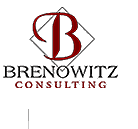


|
Issue # 8 - Organization Design - Part 3 The
partners of millpond group, Randi Brenowitz and Tracy Gibbons,
are pleased to send you the current issue of our quarterly electronic
newsletter. millpond group specializes in building collaborative
work environments and the infrastructures to support them, and
executive coaching. In this issue, you will find: 1. A discussion of People and Rewards as elements in organization design 2. A review of the book Innovative Reward Systems for the Changing Workplace by Thomas B. Wilson 3. Pointers to additional information on this topic ______________________________________________ 1. PEOPLE AND REWARDS: THE GLUE THAT HOLDS IT TOGETHER The PEOPLE element of organization design encompasses all things that have to do with having the best workforce and ensuring that the culture of the organization and the contract between workers and the company is mutually beneficial. It includes how and by what criteria people are recruited and hired to work at the company, how they develop and maintain the necessary skills and competencies, and how they are valued and managed. The key underlying principles of the People aspect of Organization Design have to do with designing a system that
The "old" way of thinking about people and work emphasized matching an individual's skills and experience to a particular job which was clearly defined and specified and relatively static (think job description). In fast-paced, continuously changing, high performance organizations, the emphasis must be on finding the people who not only bring relevant skills, competencies, and experience but who are also willing and able to apply them in a variety of situations and projects. Here, flexibility and adaptability are essential, and people are viewed as resources whose abilities contribute to the core capabilities and overall performance of the organization. Compatibility with corporate culture becomes more important, because an employee's ability to see what needs to be done and do it in an environment that has less stability and structure takes on added importance. Under these conditions, adaptive thinking, seeing and making a path where there was none, and influencing others are critical success factors-for the individual and the organization. The "how" of these capabilities is heavily influenced by unique aspects of company norms. There is also greater emphasis on leadership at all levels, because relying on and waiting for direction that comes primarily from the top slows down organizations. Instead, vision, alignment, and engagement of stakeholders throughout the organization enable people to act with more initiative and speed to achieve common, well understood objectives. Other aspects of the contract between employee and organization are also changing:
A REWARD SYSTEM is the complex set of formal and informal incentives that connect individual motivation, behavior, performance, and ultimately results to the various forms of pay or compensation received in exchange. It includes not only how people are incented and paid but also how the underlying philosophy and principles about people and their contributions and the goals of the organization are created and communicated, how each individual's contribution is aligned with and tied to organization results, and how performance is managed and appraised. In research done on reward systems, several basic premises have emerged:
It is our experience that getting the Reward System of an organization to match and support other aspects of the organization design is the most difficult and challenging part of the process. There are several reasons for this: Changes in behavior and results are typically a desired outcome in organization design efforts, and the new, valued results must first be clearly communicated and understood prior to making changes in the rewards system. Therefore, actual modifications to the reward system are made later in the process and there will likely be period of time during which a perceived discrepancy between what is being espoused and being rewarded exists. There is a vast range of combinations of incentives and motivators and of various individual responses to them. What motivates, interests, or supports one person may not work for someone else, even if they're doing essentially the same work. For example, the shift to a cafeteria approach to the selection of health and other benefits recognizes this fact. However, we have not figured out how to comprehend individual variability when it comes to performance management and compensation. Despite the fact that different parts of the organizations require different behaviors and results, most corporations insist that their reward systems be consistent across the organization. It is difficult to persuade compensation and benefits organizations to modify the fundamental processes that feed and trigger the payout of certain forms of compensation or the underlying assumptions on which they are built. For example, most compensation systems are based on individual performance, thus creating both subtle and overt forms of competition among employees who need to collaborate with each other to meet the organization's objectives. Nevertheless, if what you have is an organization that needs to rely on collaboration, involvement, initiative, and synergy in order to achieve it's objectives and result--and these days, most do--then the reward system must include, value, and mirror these requirements. Specifically, it will need to:
Some closing thoughts on Organization Design: The key here it fit. It's not enough to get a couple of the elements right, because this is a system--all the elements need to be designed in concert with each other in order for it to work well. Paradoxically however, while tight fit is important, if it's too tight, it will be difficult to modify the design and system in response to the continuously emerging need for change. Paying attention to the total design of the organization (not just its structure) needs to be as important as paying attention to customer satisfaction or financial results, for this is the source of organizational capability and effectiveness. ______________________________________________ 2. Innovative Reward Systems for the Changing Workplace by Thomas B. Wilson (McGraw-Hill, Inc., 1995) As today's organizations seek to reduce unnecessary levels of management, delegate decision-making authority to the lowest possible level, and create teams with accountability for critical functions, they are creating conflict with traditional reward systems. Traditional thinking about reward systems focused on the external marketplace and what was necessary to be competitive in attracting and retaining people. In this book, Tom Wilson focuses the reward strategy on those actions needed to implement a firm's competitive strategy. Wilson defines a reward system as any process within an organization that encourages, reinforces, or compensates people for taking a particular set of actions. It may be formal or informal, cash or non-cash, immediate or delayed. He says that organizations should develop and implement a behavioral framework for rewards. This involves rethinking the reward systems that currently exist. The process entails viewing reward systems as supporters, if not drivers, of change, and modifying the concept that pay programs are just an infrastructure to the organization. It goes beyond making sure that people are getting paid, and includes understanding the messages that a program sends and the behaviors it reinforces. This approach also involves establishing a strategy for building and integrating a set of systems, programs, and practices that reinforces the behaviors necessary for the implementation of the organization's goals. Wilson introduces the "Reward Smart" model, stating that effective reward systems are: Specific - Performance measures and feedback systems need to define what people should do to contribute to the organization's success. There needs to be a clear line of sight between the results desired and the behaviors required to achieve them. Meaningful - Rewards need to make people feel valued for their achievements from their own point of view. Achievable - The desired actions or results need to be within the participants' control or influence, and attainable through reasonable effort. Reliable - The system needs to be designed and operated in a fashion consistent with its purpose. Not only should rewards be contingent on the achievement of desired results, the whole process must be managed in a cost-effective manner. Timely - Feedback, reinforcement, and rewards need to be provided as soon after the achievement and/or behaviors as possible. Wilson cites data showing that an examination of employee performance in relation to most annual incentive plans indicates that employees make a concerted effort to achieve goals toward the end of a performance period. Wilson then goes on to show how to redesign base pay, variable/contingent pay, profit sharing/gain sharing, and special recognition programs in light of the SMART concepts to encourage the collaborative behaviors needed to serve the customer's needs better than competitors do. He suggests developing new approaches to performance management, and gives 10 guidelines for this new approach: 1.
Recognize that there is a problem In addition to introducing the concepts, this book is filled with revealing case studies of companies that are successfully using this methodology. Helpful charts and diagrams clarify the core concepts and techniques. This book can help organizations create state-of-the-art reward and recognition systems that really work. ___________________________________________ 3. Websites and Other Resources we've found about this topic include: www.amod2000.org
www.wilsongroup.com
www.newpay.com
This book looks at the impact of pay on organization strategy and effectiveness. Lawler is considered to be one of the leading innovators in the area of pay and reward systems. Kohn, Alfie. No contest: The case against competition-why we lose in our race to win. (1986). Boston: Houghton-Mifflin Company. Kohn is a seminal thinker on the inverse relationship between rewards of the carrot-and-stick variety and performance. His premise is that "while manipulating people with incentives seems to work in the short run, it is a strategy that ultimately fails and even does lasting harm." He believes that "our workplaces...will continue to decline until we begin to question our reliance on a theory of motivation derived from laboratory animals." http://www.alfiekohn.org/
|
||||||||
|
||||||||